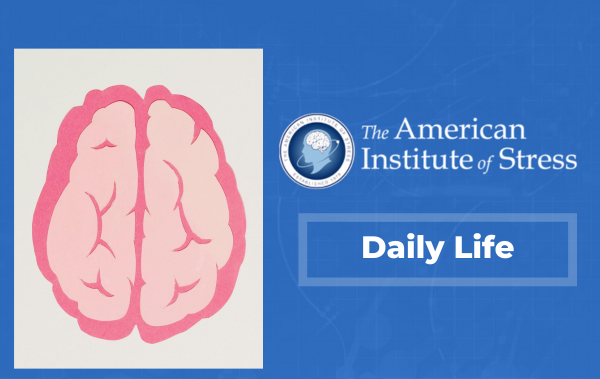
Science shows that mind wandering and present-moment focus are on opposite sides of the spectrum of how we pay attention and that it hurts work performance. It’s human nature for your mind to wander from time to time. Studies reveal that wandering thoughts are low in the morning, reach a peak until midday and gradually decline before rising again in the evening. But when the mind wanders too much at work, it leads to stress and diminishes your attention and engagement.
Mind wandering prevents you from focusing on that important deadline, paying attention during the Zoom meeting or preventing you from fully relaxing during the workday. Your mind could be wandering right now. You could be thinking about what you ate for lunch and what you “should” have eaten. You could be worried about an unfinished project or replaying in your head a disagreement with your boss.
Neuroscience And Mind Wandering
Harvard scientists found that the human mind wanders 47% of the time and that when you stray you pay. The researchers contacted 2,200 people around the world at random over several days and asked them each to use their iPhone to report what they were doing, thinking about and feeling. Nearly half of the world’s population was mentally absent during such activities as personal grooming, commuting, cooking, working, taking a walk, shopping and so forth. The study concluded that when your mind wanders, you’re more stressed and unhappy than when you stay in the here and now. No matter what people were doing, even if they were working overtime, vacuuming the house or stuck in traffic—they were happier if they were focused on the activity instead of allowing their minds to wander and think about something else.
Staying In The Here And Now
Scientists have found that the way you use your mind determines how much stress you have, and frequent out-of-the moment episodes raise your stress needle. Keeping focused in the present moment instead of ruminating about what happened in the past (which you can’t change) or about what might happen in the future (which you can’t control) keeps your stress needle down, makes you happier and boosts work performance.
So what if you could be more in the present moment and do your work at the same time? Workflow mindfulness—the curious observation of what’s happening inside and around you in the present moment without judgment during the course of your workday—allows you to do exactly that. If you’re like most people, you spin a lot of plates on a daily basis, skipping the present moment to get to the next item on your agenda. You hop in and out of the shower to get to work instead of being in the shower. You rush through your commute to the office instead of being present during the commute. You multitask to get everything done before calling it a day instead of being present with each task. What’s wrong with this picture?
You’re stuck in the past or future, while the present moment—where life really happens—passes you by. If you’re “always on,” the slightest inconvenience can trip your inner alarm system, causing you to lose your cool before you know it. Over time, stress has, in effect, kidnapped you, and you probably haven’t given much thought to doing anything about it. You may have noticed the shrinkage of your contentment, well-being and happiness, but you may not know what to do about it. When your mind hijacks you into worry, stress or depression, it magnifies its chronic perception of threats, compromising your mental and physical health.
Workflow mindfulness allow you to be mindful in motion during the flow of activities already built into the course of your workday such as during Zoom meetings, returning emails or meeting deadlines. They are quick, portable, and easy to use while on the run. Just sixty seconds of any brief present-moment activity can reset your brain, unwind stress, clear your head and raise your energy level. The beauty of workflow mindfulness is that you can blend it into your daily routines without added time.
While waiting for your quarterly review, you can practice present-moment listening. Stuck in traffic, you can focus on your in-breath and out-breath and imbibe the calm in your body. You can even practice it right now. As you read on, you might find your mind wandering. If it does, just be aware of your wandering mind, let its distraction be okay, and gently bring it back to the words on the printed page. That, too, is workflow mindfulness. When you’re fully engaged with curiosity in, you notice that previous worries or stressful thoughts fall away. You might be aware that your heart and respiration rates are slower and muscles loosen because you took yourself off the red alert of your thinking mind and brought it into the present moment.
Start Your Day With Workflow Mindfulness
On the way from the parking deck into your office building, instead of rifling through your day’s agenda, you can intentionally walk with present-moment awareness. Simply bring your attention to the sensations of your feet against the ground, note the feeling of the open sky or focus on as many different sounds as you can. You might hear a dog bark in the distance, birds tweeting, ambient traffic, a siren, an airplane, your own gurgling stomach or a heating or air conditioning unit. The goal is to stay in the present moment and substitute curiosity for judgment. After you complete the exercise, notice the shifts inside your body and see if your breathing and heart rates are slower and you feel calmer and more clearheaded.
As the day drags on, take a minute between work tasks to breathe deeply with three or four in-breaths. If you’re in a stressful Zoom meeting you can remain actively involved while practicing box breathing. And before heading into another appointment, take three or five minutes to walk around the block or stretch at your desk to reset your nervous system so you don’t take that stress with you into the next work situation. After long stretches of sitting in front of your screen, practice the 20-20-20 rule by looking 20 feet away from your computer every 20 minutes for 20 seconds. After practicing workflow mindfulness, notice if you’re not calmer and more clearheaded.
A Final Word
It’s what we’re doing during work hours that creates work stress and burnout and compromises our well-being, not solely because of the hours and days. Out-of-the-moment episodes—when your mind is stuck in the past or future—are roadblocks to relaxation and productivity. They disconnect you from yourself and your surroundings and keep your stress needle elevated. Watch your mind and notice where it goes from moment to moment for the next 24 hours. Note the difference in the workflow when you’re present and when your mind drifts to the past or future. When you find your mind wandering, gently bring it back into the present. As you continue workflow mindfulness, tension will subside, you’ll feel more relaxed and engaged and your productivity will soar.





